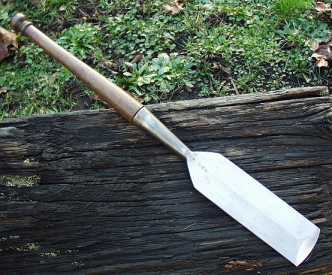mr. spanton, given what you said (in the post I'm replying to) about building in the vernacular tradition my assumption is that you'll be mostly using either green wood at about 28% MC or over, and air dried wood at perhaps 18% to 22% MC.
My guess is you'll be looking for the joints you create to self tighten due to differential shrinkage in the parts as moisture moves out of the wood. It's similar to the principles used in Windsor chair making.
I'll admit that timber framing is not my particular field but cutting and shaping green wood or air dried wood is considerably easier than working wood kiln dried to 10% (here in the UK) and, in the US, wood kilned more commonly to about 6% or 7%. The drying stiffens and hardens the wood a great deal.
So, if you've got some hefty mortices to work and chunky tenons to incorporate, and assuming you can find some stout wide mortice chisels-- Ashley Isles might be a source, then working relatively wet wood should make life bearable.
Still, as before, to avoid unnecessary force, you still might need to use a much bigger mallet (sic) ha, ha. Slainte.



































